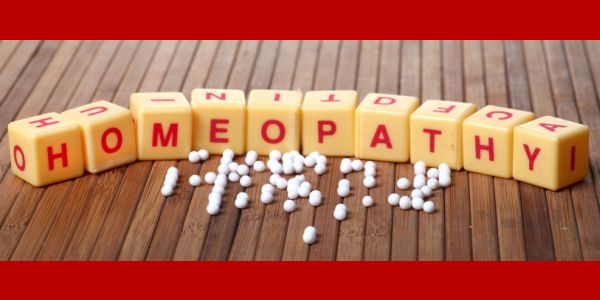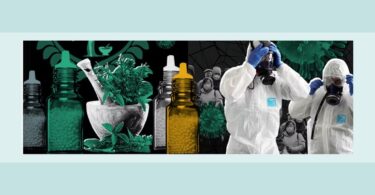In order to successfully restore balance into patients’ lives, homoeopaths today are using a holistic, integrated approach, involving the amalgamation of every method, past and present.
Often enough, homoeopathic doctors use a way of prescribing and questioning which they are comfortable with, whether that be at a physical, mental or emotional level. In homeopathy, the doctor and patient share a dialogue during the case taking. There are several questions that doctors ask the patients. In the interview, it is the patient who takes the lead, and the homoeopath follows and tries to understand every aspect about the patient. The patients should be active participants in their own healing process.
One must understand that taking the case at the right level can ensure a good result for the patient. That is why brilliant practitioners, whatever level, style or method they employ, can give good results. They are good with detecting or understanding the level in patients and once they understand that level to the fullest depth, they give something that resonates perfectly with the characteristics on that level and it creates a brilliant outcome. A little bit about the progress of homeopathy – my old journey.
Through amassing clinical evidence and from closely studying cases over the years, we have come to a much deeper understanding. This understanding helped us to see that within each of us there is a particular and individualizing pattern. This specific pattern can connect and resonate with one of our three kingdoms – the plant pattern, animal pattern or a mineral pattern. It should be noted that the plants, animals and minerals are at the same level of resonance, which means they can also be compared with each other as they can be compared with this human pattern. In other words, our pattern can lead a mineral counterpart, an animal counterpart, or a plant counterpart at sometime in our lives.
Working with a way of case-taking where we try to understand the personality of the patients more and more, at a very deep level, we discovered various groupings, like the noble gases, nosodes, and the imponderables. For years we kept working on this process and as we worked we realized there were certain cases that did not have successful results, even when the best indicated remedy was prescribed. Also, we had many cases, where the language of the patient faintly resembled the animal kingdom. That allowed us to open up and explore this further.
Animal remedies started coming to us, pouring in one by one, and then our eyes opened further. We have understood that rather than an active seeking of wanting to learn and work with animals, patients accepted our passive receiving technique and felt comfortable in that environment, expressing their nature to the maximum depth.
Eventually, what we have concluded is that in each case, though the patient may not use the direct animal kingdom words or the ‘me versus you’ theme, there is a subtle language that patients use which helps us to pick the specific animal trait and prescribe animal remedies. We have prescribed animal remedies far more than what other homoeopaths have done and have attained excellent results. Ultimately, we realized and have concluded that deep down in every case, is an animal. This article aims to explain the derivation of the concept of the crossover to discovering the animal within.
Each individual is born with a unique core pattern or prototype, similar to that of DNA. This pattern or prototype has many things encoded within it. Individual perceptions, experiences, and reactions emanate from that prototype. We are born with a pattern that can correspond and resonate to the patterns of the kingdoms – plant, animal or mineral, and we can use this to heal us.
Each personality pattern is made up of a certain specific set of dualities. The interplay between these different polar opposites makes each person’s personality special. Based on this specific set of dualities, each individual perceives the world in their own unique way and based on these perceptions, they experience everything around them, and react accordingly.
The understanding of patterns and sensation allows homoeopaths to look at cases in a holistic and well-rounded manner, whether it is the physical symptoms, emotional symptoms, delusions, clinical pathology, and rubrics of the patient. One thing we have understood is that plants, minerals and animals, each have their own distinctive story and pattern. Each one of them has a beautiful picture of their own, of their own development, their ups and downs, and their own way of reacting. Each one of them is a personality by themselves be it Nitrogen, Pulsatilla or Lachesis.
Over the years, we have often asked ourselves a simple, yet imperative question: why and how do different homoeopaths who prescribe in different ways, still attain successful and positive results? Some may use rubrics, simple keynotes, or even tongue mapping, however the key to their success remains a mystery. Throughout most recent work and research, we hope to shed some light on this very question.
We have understood that within our patterns, there must be many, many points at various different levels. If you consider the pattern as a wave, there must be many points on the wave, at different locations on the wave. If any homeopath is good at picking up any of these points and matching it to a homoeopathic medicine perfectly, then good results can ensue. Otherwise it does not make sense, that for the same patient, many different remedies can provide positive results.
It is imperative to note that the intrinsic pattern or prototype does not change, however, the various points of the wave can be accessed at different levels, and therefore, different remedies can act on that specific level and produce a successful outcome.
Within our prototype, each one of us has a plant, animal and mineral pattern encoded. These three are always at the same level as the patient, and are always in tune with each other. There is a relationship that is developed between the animal, mineral and plant that the patient needs.
Some homoeopaths might be good at finding the mineral counterpart and thus, they get good results. Some may be good at finding the plant counterpart, and they get good results. We have researched and worked very hard to sharpen our skills to find the animal counterpart.
What we have understood and comprehended from this is that at different times in a patient’s life, they may need different counterparts. Sometimes it is the moment for a plant or mineral counterpart, and these will work best in certain situations.
In our understanding there is always an animal deep within, but there may be times where it is not the appropriate moment to give the animal counterpart. Similarly, when an animal counterpart is needed, the mineral and plant counterparts will not work well.
This may lead you to ask the question: which counterpart is needed and when?
From our clinical research and observations, the mineral counterpart is needed when the person is obsessed with his or her own inner capacity and abilities. The plant counterpart is needed when the person is overwhelmed in every way by an external physical stimulus or emotional situation. The animal counterpart is needed when the patient is not only thinking about his or her inner capacity and overwhelmed feelings, but is also thinking about the complex of relationships which they belong to, in addition to the competition and rivalry. All of these things are basic human issues that you see in society.
Through clinical experience, it has been observed that an animal pattern has a more all-encompassing healing effect on patients than that of any plant or mineral. The right animal pattern can resonate with almost all facets of the entire core pattern of the patient.
The animal pattern within humans connects with emotions and experiences which they have learned or been taught to avoid or suppress. With this in mind, it is understood that if the limits or boundaries are pushed, it is possible to get the patients to go to the next level. We believe that there is always the possibility of getting patients to connect to the animal pattern within them.
The Animal Kingdom is much more evolved. Animals have issues of completion, adequacy and targets. Animals encompass the mineral issues of inadequacy and incompleteness, of weakness and of strength – hence, patients needing animal remedies can present like minerals until we can get to the deeper animal pattern.
Let us take an example. We were giving a woman Calcarea phos for a very long time and she was doing well, however because we felt that it was necessary to repeat it frequently, we decided to look at her case further. This patient had two parts to her. The first part was that she was very much dependent on her husband for security, money, and everything else. The feeling was that she had her husband and it was her most important mode of survival. Then, she explained she had all the freedom she needs in the world because he gives her the freedom. She explained that although he is a very difficult, dictatorial and dominating man with others, she was fine because he gave her all the freedom in the world that she wants. After examining and understanding her case, it was evident that her dependence on her husband was not really improving. Further, she explained that she also had a very difficult childhood and had a very bad father, which resulted in no feelings of security. Based on the dependency on her husband for security, yet still needing her independent identity, the remedy Calcarea phos was given. Her condition was improving for a while, but then suddenly she stopped responding. Her irritable bowel syndrome and sinusitis got worse, and we could not figure out why the remedy stopped working.
So, we did a retake and found that this patient came to the same issues as before, however an interesting thing she revealed was that her husband was now retired. Presently, she was facing more of a challenge. Since her husband retired, she felt her freedom was totally gone. Here, we felt there was something more to be found, so we told the patient to simply just stay with the word freedom, describe it, compare it, and create a picture of the word freedom. For this patient, freedom was like jumping out of the grasp of someone, like a deer jumping out of a hunter’s hands.
This kind of case-taking helped us to take her one step deeper – from views, choices, and identity, we asked her to describe freedom, to compare freedom and to make a picture of freedom. This type of questioning helped us to jump a level to a deeper pattern within – the animal pattern.
What happened in this case were two things. One is that we actually changed our questioning style, which helped us to jump to a deeper level. We realized we had to question patients in a different way in difficult cases in order to reach the depth of their core. The second thing we realized is that there was a hidden animal here.
Going along with the patient, we asked her to describe this grasp. She explained it was constricting, constraining, and restricting. The grasp does not let her slip out. We asked her to describe this and she explained she did not want to slip out forever from that grasp. She then went into a story about her husband and how happy she is with him. She was happy he provided for the family, dominating over her at times, and was like a man. However, within the boundaries of domination, she wanted to have her freedom to go to exercise class, sleep when she wanted to, and go to her friend’s place. She wanted to do things within the boundaries, on her own terms. She explained she was very happy to slip in and out of the grasp.
What we eventually realized was that this patient was happy with and wanted the domination because that gave her the means for survival. However, at the same time, within the boundaries of domination, she wanted to feel like she is ruling her own life and living by her own terms. When her husband retired, she felt like she was not able to do what she wanted to do in her own life and didn’t have the freedom.
Understanding this situation, I gave the patient Lac felinum. The theme of this remedy is, within the boundaries of domination or authority the individuals look for independence. If we look at the source, this is exactly how the domesticated cat behaves. Though the cat accepts domestication, it lays its own rules down. It likes domestication because this gives the animal security, but the behavior is highly independent.
After prescribing this remedy, there was remarkable improvement in both her mental and physical symptoms. Emotionally she was much better, and explained she had never felt this change with the previous remedy. She felt like the remedy had unlocked the freedom within her. She didn’t feel so dependent on her husband or restricted by him. Her compulsion to be dependent improved, as well as her compulsion to be independent improved.
What can be learned from this case is that there can be a mineral and plant within all of us, but the animal within us, covers a much larger complex. Also, what can be cultivated from this is that maybe there is an animal lurking in the background in every patient. Just because we do not get the feelings of kill, flesh and blood, or a sensation word like survival, we stop short and do not give an animal remedy.
In our understanding, what we as humans have done is, we have left the jungle and come to civilization, leaving our animal instincts behind to create a concrete ecosystem. However, what we have actually done is created and replicated the same jungle in this concrete ecosystem. Some people behave as predators, some as prey, some as scavengers and some as parasites – because in the end, we are finally animals. To reiterate, what we have done is we have left the jungle and created our own bubble of the human ecosystem, and within this ecosystem we are replaying what is already in nature. This is why our energies are very similar to the animals in nature – and we can use these energies to heal our imbalances.





Very nice info…
It will definitely help everyone in practice.